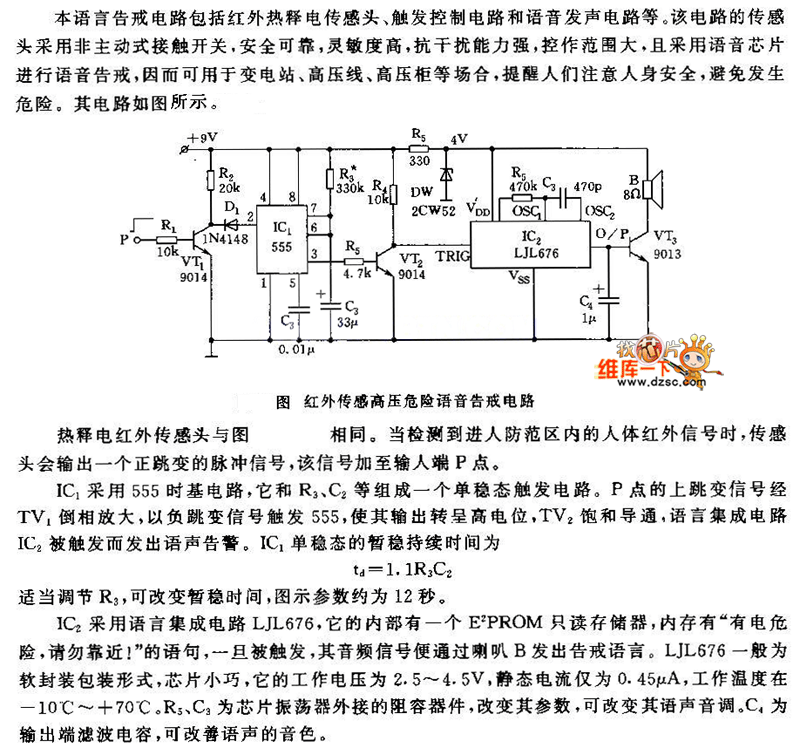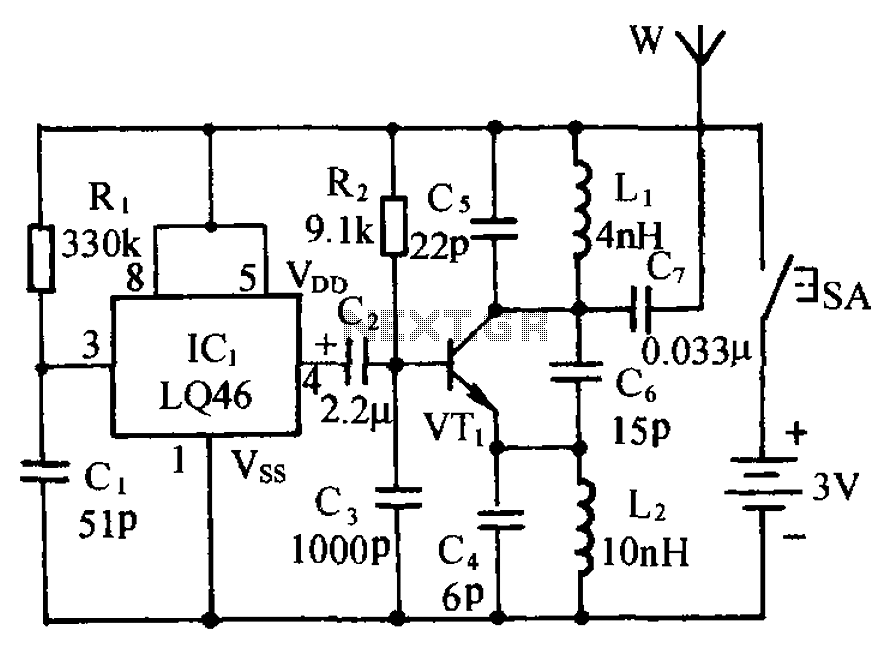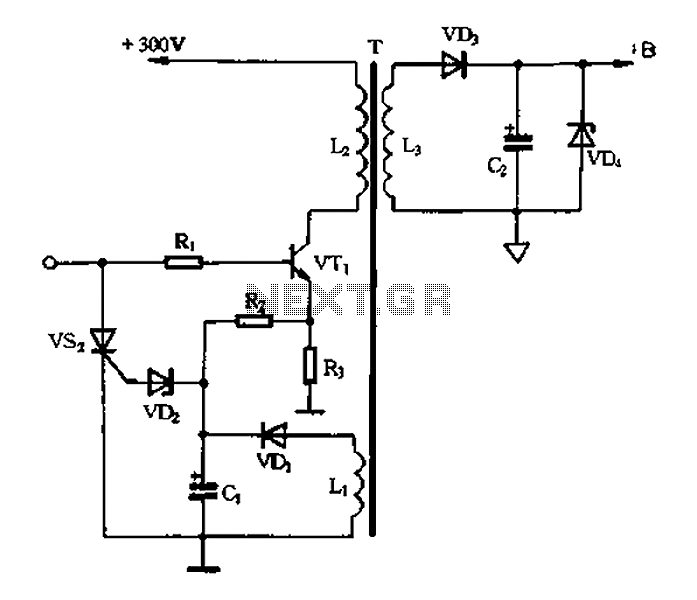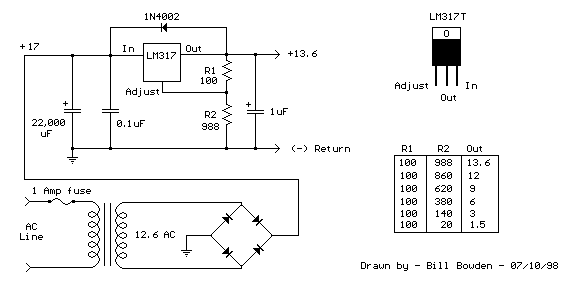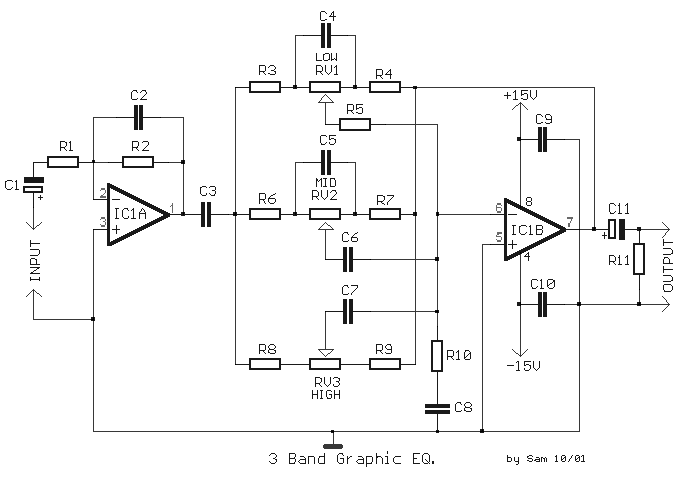
1500A-7V-phase thyristor power regulator circuit a plating
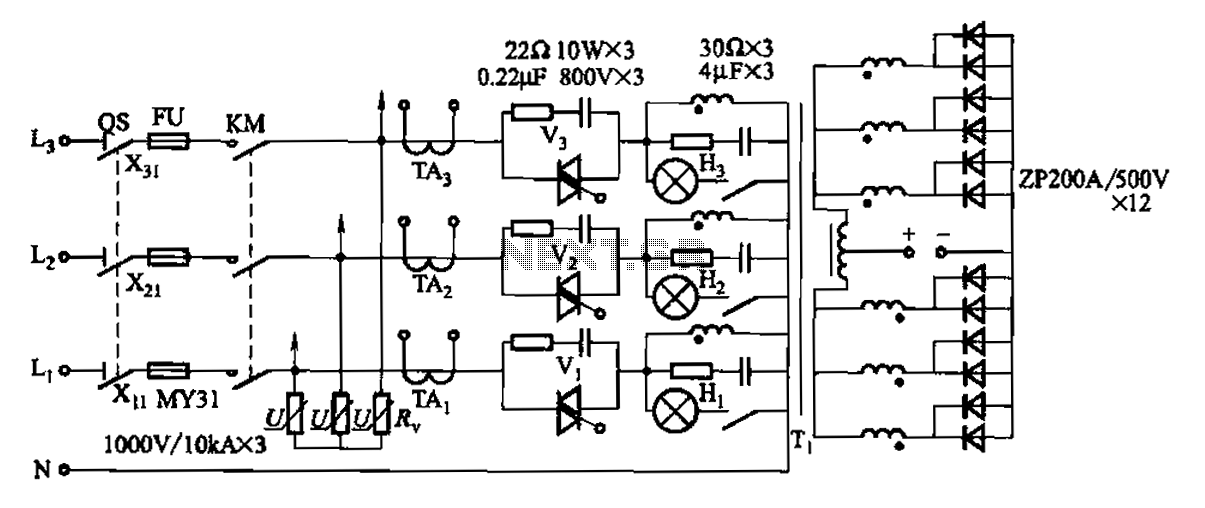
A 1500A-7V phase thyristor power regulator circuit is designed for plating applications. It consists of three major components: the main circuit, the control circuit, and the protection circuit. The control circuit includes a trigger circuit, a synchronous power supply, and additional components. The given voltage Ug, which is superimposed and provided by the potentiometer RP4, controls the synchronous voltage. The trigger circuit board VT5 operates in a state based on this control. In the event of an overload, as determined by a set value from the potentiometer RP3, the regulator VS3 remains intact under normal conditions. However, if an overload occurs, VS3 may fail, leading to conduction in VT2 while VT1 turns off, and both VT3 and VT4 also turn off. This action results in the thyristors closing and cutting off the main circuit, achieving overcurrent protection.
The 1500A-7V phase thyristor power regulator circuit is designed to manage power levels in plating processes, where precise control of voltage and current is essential for achieving high-quality finishes. The main circuit is responsible for the high-power handling capabilities, allowing it to manage substantial currents up to 1500A at a voltage of 7V.
The control circuit plays a critical role in regulating the output voltage and current. It incorporates a trigger circuit that activates the thyristors based on the input voltage conditions. The synchronous power supply ensures that the control circuit operates reliably under varying load conditions. The use of a potentiometer, RP4, allows for fine-tuning of the input voltage, which is essential for maintaining the desired operational parameters.
Protection mechanisms are integrated into the design to prevent damage to the circuit components during overload conditions. The potentiometer RP3 sets the threshold for normal operation, and the regulator VS3 monitors the system's performance. If the current exceeds the preset limits, VS3 may fail, triggering a series of events where VT2 becomes conductive while VT1, VT3, and VT4 turn off. This sequence effectively deactivates the thyristors, thus disconnecting the main circuit and safeguarding the entire system from potential damage due to overcurrent.
Overall, this thyristor power regulator circuit is an essential component in industrial plating applications, ensuring both performance and safety through its well-designed control and protection features.1500A-7V-phase thyristor power regulator circuit a plating It consists of the main circuit, control circuit and the protection circuit has three major components. The control c ircuit includes a trigger circuit, synchronous power supply and other components. Given voltage Ug superimposed (given by the RP4) and synchronous voltage control transistor trigger circuit board VT5 work like state. When the circuit is overloaded (set value set by the potentiometer RP3, under normal circumstances, the regulator VS3 no breakdown), VS3 hit wear, VT2 conduction, VTi off, VT3, VT4 off thyristors closed, cutting off the main circuit, reaches overcurrent protection purposes.
The 1500A-7V phase thyristor power regulator circuit is designed to manage power levels in plating processes, where precise control of voltage and current is essential for achieving high-quality finishes. The main circuit is responsible for the high-power handling capabilities, allowing it to manage substantial currents up to 1500A at a voltage of 7V.
The control circuit plays a critical role in regulating the output voltage and current. It incorporates a trigger circuit that activates the thyristors based on the input voltage conditions. The synchronous power supply ensures that the control circuit operates reliably under varying load conditions. The use of a potentiometer, RP4, allows for fine-tuning of the input voltage, which is essential for maintaining the desired operational parameters.
Protection mechanisms are integrated into the design to prevent damage to the circuit components during overload conditions. The potentiometer RP3 sets the threshold for normal operation, and the regulator VS3 monitors the system's performance. If the current exceeds the preset limits, VS3 may fail, triggering a series of events where VT2 becomes conductive while VT1, VT3, and VT4 turn off. This sequence effectively deactivates the thyristors, thus disconnecting the main circuit and safeguarding the entire system from potential damage due to overcurrent.
Overall, this thyristor power regulator circuit is an essential component in industrial plating applications, ensuring both performance and safety through its well-designed control and protection features.1500A-7V-phase thyristor power regulator circuit a plating It consists of the main circuit, control circuit and the protection circuit has three major components. The control c ircuit includes a trigger circuit, synchronous power supply and other components. Given voltage Ug superimposed (given by the RP4) and synchronous voltage control transistor trigger circuit board VT5 work like state. When the circuit is overloaded (set value set by the potentiometer RP3, under normal circumstances, the regulator VS3 no breakdown), VS3 hit wear, VT2 conduction, VTi off, VT3, VT4 off thyristors closed, cutting off the main circuit, reaches overcurrent protection purposes.
